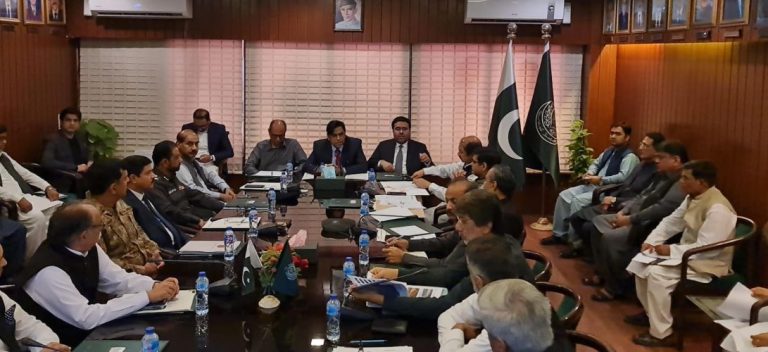
The above-average rainfall, combined with glacial melt, could bring 500,000 to 900,000 cusecs of water into the Indus River.
Karachi, Sindh
The above-average rainfall is expected during the monsoon 2024 (July to September) which, combined with glacial melt, could bring 500,000 to 900,000 cusecs of water into the Indus River.
This was informed in a meeting held on Friday June 7, with Chief Secretary Sindh, Syed Asif Hyder Shah in the chair. The meeting was convened at Sindh Secretariat to review preparations for preventing losses due to heavy rains and flooding anticipated from July to September.
The meeting was attended by Minister for Local Government Saeed Ghani, Minister for Revenue and Rehabilitation Makhdoom Mehboob Zaman, senior member, Board of Revenue Baqaullah Unar, Secretary Local Government Syed Khalid Hyder Shah, Secretary Rehabilitation Waseem Shamshad, DG Rescue 1122 Dr. Abid Shaikh and representatives from the Army, Police, HESCO and SEPCO. Additionally, all Divisional Commissioners, Deputy Commissioners, and Assistant Commissioners participated via video link.

Minister for Revenue and Rehabilitation, Makhdoom Mehboob Zaman, briefed the participants on the preparedness measures, highlighting that above-average rainfall is expected during this period, which, combined with glacial melt, could bring 500,000 to 900,000 cusecs of water into the Indus River. He noted that in 2022, Padidan experienced 1026% more rainfall than usual, and Larkana saw 584% above-average rainfall.
He told that Karachi, Jamshoro, and Sukkur warehouses are stocked with 300,000 tarps, 1.9 million mosquito nets, and 572 heavy dewatering pumps.
Chief Secretary Syed Asif Hyder Shah instructed all departments to maintain contact with the Meteorological Department and PDMA. He directed Deputy Commissioners to convene District Disaster Management Authority meetings to prepare medium and high flood contingency plans. He emphasized ensuring the availability of emergency equipment, machinery, dewatering pumps, and emergency staff. Furthermore, he mandated the creation of an inventory of all resources, including life jackets, boats, and rescue personnel available in each district.
Chief Secretary stressed the need for heightened awareness and preparedness due to climate change, which is causing more frequent and severe rain and flood events. He warned of the risk of urban flooding in major cities of Sindh and instructed the Department of Relief to keep all agencies informed about weather conditions and preparedness measures. He also emphasized informing the residents of the Indus River’s catchment areas about the situation. The Health Department was directed to declare an emergency in hospitals and ensure the availability of medicines, particularly for malaria and waterborne diseases.
Provincial Minister for Local Government Saeed Ghani highlighted the inclusion of local government representatives in rehabilitation efforts. He announced that relief camps would be set up at the union council level in any emergency situation and emphasized the need to store ration, tents, and other essential supplies in district warehouses to prevent logistical issues faced during previous rains. He assured that funds would soon be provided to WASA in Hyderabad to ensure the cleaning of storm water drains. During the meeting, the Secretary of Irrigation briefed on the measures taken to protect the LBOD and manage water flow from Balochistan. (PR)
Read: Floods 2022: Relief Support was Politically Influenced – SHRC
____________________